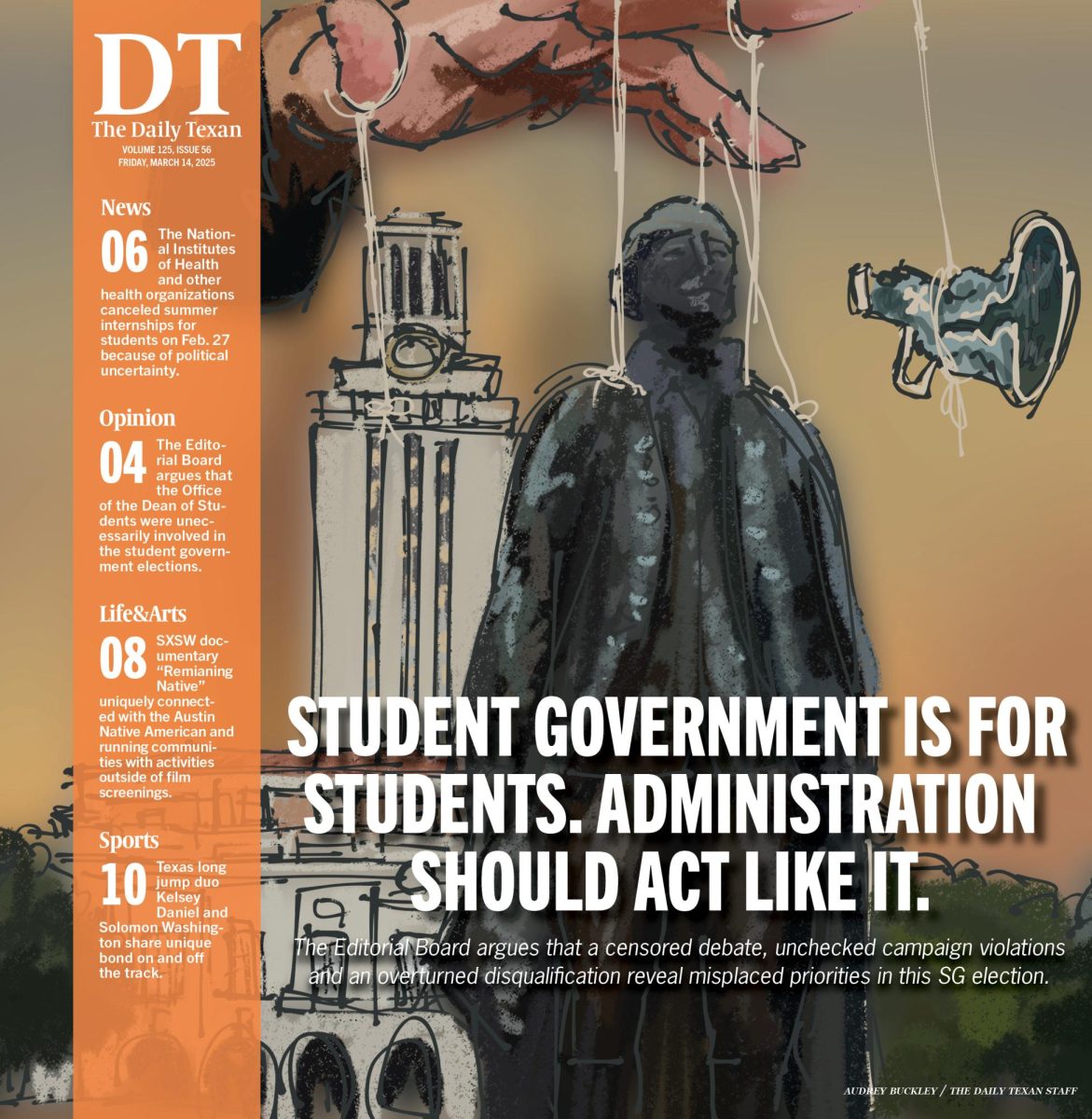Provide end-of-semester feedback
April 25, 2021
Editor’s Note: This article first appeared in the April 16 issue of The Daily Texan.
At the end of each semester, UT students are encouraged to complete Course Instructor Surveys to provide anonymous feedback about their course experiences. Aside from their institutional value as a tool utilized by UT administration to advance instructors through the teaching hierarchy, these surveys also play an important role in instructors’ development.
Instead of using guesswork, instructors are able to precisely pinpoint and address the areas of greatest concern.
While these surveys provide instructors avenues for personal growth, students are not afforded the same opportunity. UT should work to address this fact by encouraging instructors, particularly those teaching smaller, upper-division courses, to complete a student evaluation form at the end of each semester.
“Personally, especially as a graduate student instructor, I take student evaluations really seriously because it is how I learn what is working and is not working,” said Adena Rivera-Dundas, a postdoctoral lecturer in the Department of English. “For me, the written feedback is the most important part of it, and so what I do is I go through my evaluations and look for trends.”
Instructors certainly provide students feedback now, even without such a survey. However, this feedback is often limited to the confines of a single assignment and only focuses on improvement for the next assignment within the course. The end-of-course student evaluation would have a broader goal: student growth and success beyond a single assignment and a single course.
“I think it would be really effective to get that feedback from professors, because it would help you learn what you did over the semester, how you started and how you grew, and then you can take that and use that information to better yourself for other classes,” said Jeremiah Baldwin, a government, rhetoric and writing, and African & African diaspora studies sophomore.
The logistics of this survey would need to be further hashed out within each college and by individual instructors. However, the format of the CIS provides a good basis, with its focus on both analytical data and anecdotal feedback. Furthermore, to limit the amount of student evaluations an instructor would need to complete and to prevent unsolicited evaluations, students would need to opt-in to receiving one.
Clay Spinuzzi, a professor of rhetoric and writing, expressed some concern about the benefits of using such tools as an evaluative measure of performance.
“When someone is writing up an evaluation at the end of the semester, they are usually working from memory, and it’s easy to rely on anecdotes rather than patterns or evidence,” Spinuzzi said in an email. “That’s a known problem for (Course Instructor Surveys). So I’d worry that instructors would follow the same pattern.”
This is something the surveys should undoubtedly account for. Analytical and anecdotal measures should complement each other. The analytical data should be based on a rubric that outlines the course objectives and provides an evaluative scale.
The anecdotal feedback should capture the depth of commentary a simple numerical judgement lacks. It could offer constructive judgement and affirmative praise.
The value feedback presents is plentiful. It not only allows students a path for growth and development by making them more aware of their weaknesses, it also provides an opportunity to embrace their unique talents and perspectives that might have gone unnoticed by students.
Instructors and students alike need constant, deliberate feedback to develop. It is time to recognize this and provide students with the opportunity to receive end-of-semester evaluations that will help give them a baseline for their future far beyond the length of one semester.
Littleton is a government junior from Waco, Texas.












